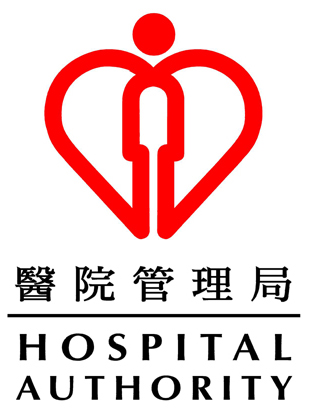 HA Central Committee on Infectious Diseases
HA Central Committee on Infectious Diseases Ref No.
CCIDER-COVID19-001(v1.4)
and Emergency Response (CCIDER)
Issue Date
21 September 2021
Review Date 13 February 2023
Interim Recommendation on Clinical Management of Approved by CCIDER
Adult Cases with Coronavirus Disease 2019 (COVID-
19)
Page
Page 1 of 18
Interim Recommendation on Clinical Management of
Adult Cases with Coronavirus Disease 2019 (COVID-19)
Version
Effective Date
1
13 February 2020
1.1
18 June 2020
1.2
9 September 2020
1.3
25 March 2021
1.4
21 September 2021
Document Number CCIDER-COVID19-001(v1.4)
Author
HA Task Force on Clinical Management on
Infection (TFCM)
Custodian
Central Committee on Infectious Diseases and
Emergency Response (CCIDER)
Approved by
Central Committee on Infectious Diseases and
Emergency Response (CCIDER)
Approval Date
21 September 2021
Next Review Date
13 February 2023
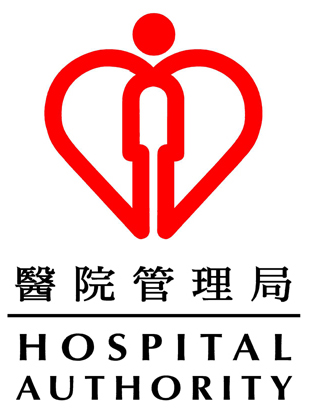 HA Central Committee on Infectious Diseases
HA Central Committee on Infectious Diseases Ref No.
CCIDER-COVID19-001(v1.4)
and Emergency Response (CCIDER)
Issue Date
21 September 2021
Review Date 13 February 2023
Interim Recommendation on Clinical Management of Approved by CCIDER
Adult Cases with Coronavirus Disease 2019 (COVID-
19)
Page
Page 2 of 18
Table of Contents
Section
Page
1
Purpose ................................................................................................
3
2
Scope ...................................................................................................
3
3
Introduction ..........................................................................................
3
4
Surveil ance and reporting criteria ...................................................
3
5
Clinical Management .........................................................................
3
6
Use of Specific anti-COVID-19 treatments ....................................
6
7
Release from Isolation .......................................................................
15
8
Follow-up arrangement .....................................................................
16
9
References ...........................................................................................................
16
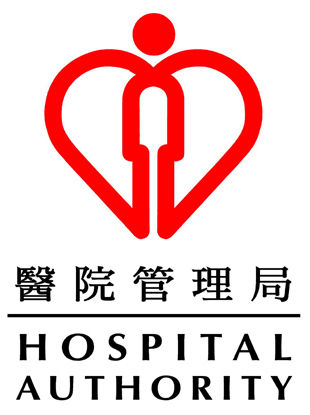 HA Central Committee on Infectious Diseases
HA Central Committee on Infectious Diseases Ref No.
CCIDER-COVID19-001(v1.4)
and Emergency Response (CCIDER)
Issue Date
21 September 2021
Review Date 13 February 2023
Interim Recommendation on Clinical Management of Approved by CCIDER
Adult Cases with Coronavirus Disease 2019 (COVID-
19)
Page
Page 3 of 18
1. Purpose
1.1. To provide guidance on clinical management of patients with Coronavirus
Disease 2019 (COVID-19)
2. Scope
2.1. For all healthcare workers at hospitals
3. Introduction
3.1. A new strain of coronavirus (SARS-CoV-2) which has not been previously
identified in human, was reported in Wuhan, China in December 2019. It
belongs to a clade of betacoronavirus distinct from those associated with
human severe acute respiratory syndrome (SARS) and Middle East respiratory
syndrome (MERS). Coronavirus Disease 2019 (COVID-19) causes acute
respiratory infection and pneumonia. Symptoms include fever, malaise, dry
cough, shortness of breath, anosmia and ageusia. Some patients may have
respiratory symptoms without fever and some patients may also have diarrhea.
People of older age or having underlying chronic disease are at a higher risk
of deterioration into serious condition.
4. Surveil ance and reporting criteria
4.1. Please report suspected cases fulfil ing the reporting criteria of Coronavirus
Disease 2019 (COVID-19) to the Central Notification Of ice (CENO) of CHP
via fax (2477 2770), phone (2477 2772) or CENO On-line
(https://cdis.chp.gov.hk/CDIS_CENO_ONLINE/ceno.html). The case definition
is available on the above website of CENO On-line. Both reporting criteria and
case definition are subject to change upon availability of further
epidemiological, clinical and virological data.
5. Clinical Management
5.1. Isolate the patient(s) in airborne infection isolation room (AI R) with standard,
contact, droplet and airborne precautions
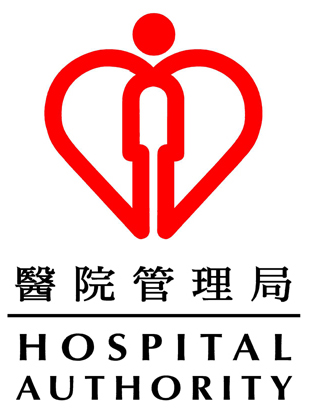 HA Central Committee on Infectious Diseases
HA Central Committee on Infectious Diseases Ref No.
CCIDER-COVID19-001(v1.4)
and Emergency Response (CCIDER)
Issue Date
21 September 2021
Review Date 13 February 2023
Interim Recommendation on Clinical Management of Approved by CCIDER
Adult Cases with Coronavirus Disease 2019 (COVID-
19)
Page
Page 4 of 18
5.2. Notify via NDORS/ eNID, and update the confirmed patient data when
necessary
5.3. Diagnosis:
5.3.1. Specimens for RT-PCR of SARS-CoV-2
Lower respiratory tract (always preferred): sputum or tracheal
aspirate (TA) if intubated or bronchoalveolar lavage (BAL) (if
bronchoscopy)
OR
Upper respiratory tract: Nasopharyngeal Flocked swab (NPFS) or
Nasopharyngeal Aspirate (NPA) [Pooled with throat swab in viral
transport medium] or Deep throat saliva (DTS)
Stool: For patient fulfil ing reporting criteria with diarrhea, stool can
be sent to PHLSB for RT-PCR for SARS-CoV-2 testing
5.3.2. For preliminarily positive cases, specimen should be re-tested and
sent to PHLSB for confirmation
5.3.3. Repeated testing may be necessary to exclude the diagnosis. Please
consult the clinical microbiologists or infectious disease physicians for
advice
5.3.4. If patient has any stool sample being tested positive for SARS-CoV-2
previously, contact precaution should be maintained until negative
result from stool has been obtained
5.3.5. Microbiological workup as appropriate, e.g.
Sputum, urine and blood culture
NPA +/- Tracheal aspirate for flu A/B and other respiratory viruses
NPA +/- Tracheal aspirate for atypical pneumonia PCR
Urine for legionella and pneumococcal antigen
5.3.6. Other investigations e.g. CBP with D/C, L/RFT, CaPO4, glucose, ESR,
CRP, procalcitonin, CXR and ECG, etc.
5.4. Monitor vital signs and organ functions, and recognize complication(s) early
5.5. Liaise with ICU early for intensive care if anticipate clinical deterioration
 HA Central Committee on Infectious Diseases
HA Central Committee on Infectious Diseases Ref No.
CCIDER-COVID19-001(v1.4)
and Emergency Response (CCIDER)
Issue Date
21 September 2021
Review Date 13 February 2023
Interim Recommendation on Clinical Management of Approved by CCIDER
Adult Cases with Coronavirus Disease 2019 (COVID-
19)
Page
Page 5 of 18
5.6. Provide supportive treatments
5.6.1. Monitor for any concomitant bacterial infections and start empirical
antibiotics if necessary
5.6.2. β lactam/β-lactamase inhibitor combination or 3rd generation
cephalosporin +/- macrolide/doxycycline can be considered
5.6.3. Oxygen
5.6.4. IV fluid (conservative fluid management for severe respiratory failure)
5.6.5. Hemodynamic support
5.6.6. High-flow nasal oxygen (HFNO) may be considered in selected patients
with hypoxemic respiratory failure. These patients should be closed
monitored for clinical deterioration.
5.6.7. Mechanical ventilation with protective lung ventilation +/- consider
ECMO for refractory respiratory failure
5.6.8. Renal replacement therapy (renal failure)
5.6.9. Consider proton pump inhibitors (PPI) for stress ulcer prophylaxis for
prevention of GI bleeding per clinical judgment of ID physician/
Intensivist for moderate to severe cases
5.7. Anticoagulation
5.7.1. In patients hospitalized with COVID-19, use pharmacological
prophylaxis, such as low molecular weight heparin (such as enoxaparin
40mg Q24H subcutaneous, according to local and international
standards, to prevent venous thromboembolism, when not
contraindicated. For those with contraindications, consider mechanical
prophylaxis (intermittent pneumatic compression devices)
 HA Central Committee on Infectious Diseases
HA Central Committee on Infectious Diseases Ref No.
CCIDER-COVID19-001(v1.4)
and Emergency Response (CCIDER)
Issue Date
21 September 2021
Review Date 13 February 2023
Interim Recommendation on Clinical Management of Approved by CCIDER
Adult Cases with Coronavirus Disease 2019 (COVID-
19)
Page
Page 6 of 18
6. Use of Specific anti-COVID-19 treatments
6.1. Unlicensed treatment should be given under ethically-approved clinical trials
as far as possible. In the absence of appropriate clinical trials, the following
treatment regimens may be considered early, particularly in patients having
following conditions with increased risk of severe disease
• Diabetes mellitus
• Obesity (body mass index [BMI of 30kg/m2 or higher])
• Age >= 65
• Immunocompromised state
• Underlying chronic il nesses
6.2. The following table summarizes dif erent available treatment regimens. These
regimens are determined based on evidence extrapolated from research
performed for other coronaviruses, expert opinion, non-randomized placebo
controlled trials, case series and limited randomized placebo control ed trials
on treatment of COVID19, as well as the availability of therapeutics in Hong
Kong. This serves as an interim guidance and wil be updated according to the
availability of new evidence or drug availability.
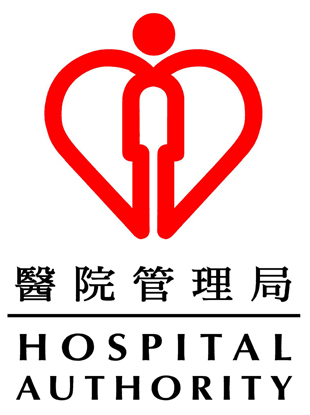 HA Central Committee on Infectious Diseases
HA Central Committee on Infectious Diseases Ref No.
CCIDER-COVID19-001(v1.4)
and Emergency Response (CCIDER)
Issue Date
21 September 2021
Review Date 13 February 2023
Interim Recommendation on Clinical Management of Approved by CCIDER
Adult Cases with Coronavirus Disease 2019 (COVID-
19)
Page
Page 7 of 18
Setting and severity of il ness
Mild-to-moderate disease
Severe but non-critical
Critical disease (e.g. in ICU
without need of suppl. oxygen
disease (SaO2 <94% on
needing HFNO, mechanical
room air)
ventilation (MV), or septic
shock, ECMO)
Anti-virals
1
Interferon beta-1b
Can be considered for early
Can be considered for early
Can be considered for early
onset disease (<14 days
onset disease (<14 days
onset disease (<14 days
symptom)
symptom)
symptom)
2
Remdesivir
Can be considered in high risk Suggest use
Suggest against routine use
patients
3
Ribavirin
Can be considered as part of
Can be considered as part
Can be considered as part of
interferon-based regimens
of interferon-based regimens
interferon-based regimens
4
Lopinavir + ritonavir Can be considered as part of
Can be considered as part
Can be considered as part of
interferon-based regimens
of interferon-based regimens
interferon-based regimens
Anti-inflammatory or immunotherapeutic
1
Corticosteroids
Suggest against use
Suggest use
Recommend use
Dexamethasone 6mg QD or
equivalent glucocorticoids
2
Convalescent
Suggest against use
Suggest against use
Can be considered at
plasma
discretion of ID physicians/ ICU
intensivist, or use in the context
of a clinical trial
3
Tocilizumab
Suggest against routine use
Suggest use in addition to
Suggest use in addition to
standard of care (steroid)
standard of care (steroid)
In patients with CRP
In patients with CRP
>=75mg/L
>=75mg/L
4
Baricitinib +
Suggest against use
Suggest use
NA
remdesivir +/-
at discretion of ID physicians/
corticosteroids
ICU intensivist
Anti-SARS-COV-2 Antibody products
1
Casirivimab +
Can be considered in high risk
Suggest against use
Suggest against use
imdevimab
patients at discretion of ID
physicians
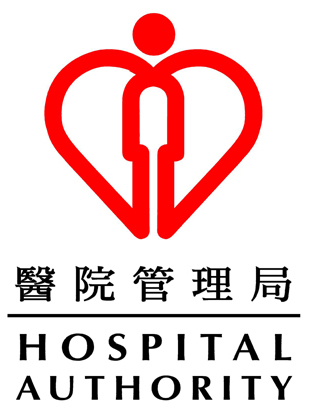 HA Central Committee on Infectious Diseases
HA Central Committee on Infectious Diseases Ref No.
CCIDER-COVID19-001(v1.4)
and Emergency Response (CCIDER)
Issue Date
21 September 2021
Review Date 13 February 2023
Interim Recommendation on Clinical Management of Approved by CCIDER
Adult Cases with Coronavirus Disease 2019 (COVID-
19)
Page
Page 8 of 18
6.3. Interferon-based regimen
6.3.1. May consider the following regimen in confirmed patients (Not a
standard therapy)
Interferon beta-1b 0.25mg (8 MIU) subcutaneous alt day*
(maximum 7 doses),
up to 14 days of symptom onset
+
Ribavirin 400mg BD po for 7-14 days depending on clinical response
OR
lopinavir/ ritonavir 400mg/100mg (Kaletra) BD po for 7-14 days
depending on clinical response
6.3.2. Interferon beta-1b is considered as the backbone therapy and
combination therapy with ribavirin or kaletra is preferred. Interferon
beta-1b monotherapy may be considered if use of ribavirin or kaletra
is contraindicated or there is significant side ef ect due to either drugs
6.3.3. Reserve syrup formulation of kaletra in patients in ICU, paediatric
patients or patients with swallowing dif iculty
6.3.4. Dosage adjustment of ribavirin is required for renal impairment
6.3.5. Pre-treatment workup
-
Check blood x CBP, LRFT, RG, LDH, CK, HBsAg, anti-HCV,
anti-HIV
-
+ blood x TFT, ANA (for starting interferon)
-
CXR (+/- HRCT thorax if indicated)
-
ECG (if preexisting cardiac abnormalities or disease or
clinically indicated). For patients with underlying pre-existing
cardiac problems, fol ow-up monitoring of the cardiac
condition is suggested.
-
Pregnancy test for females with reproductive potential
(Before starting interferon or ribavirin)
-
Avoid pregnancy in female patients and female partners of
male patients during ribavirin therapy; use ef ective
contraceptive measures during treatment and for at least 6
 HA Central Committee on Infectious Diseases
HA Central Committee on Infectious Diseases Ref No.
CCIDER-COVID19-001(v1.4)
and Emergency Response (CCIDER)
Issue Date
21 September 2021
Review Date 13 February 2023
Interim Recommendation on Clinical Management of Approved by CCIDER
Adult Cases with Coronavirus Disease 2019 (COVID-
19)
Page
Page 9 of 18
months after completion of therapy
-
Check any drug interactions with concomitant medications (in
particular with ritonavir)
-
Obtain consent for treatment
(i) Unlicensed indication and treatment is experimental
(ii) Side ef ects of treatment
(iii) Contraindications:
Interferon beta-1b: history of hypersensitivity to
interferon beta, albumin; decompensated liver
disease, current severe depression and/or suicidal
ideation
Ribavirin: history of hypersensitivity to ribavirin;
pregnant: patients with hemoglobinopathies (e.g.
thalassemia major, sickle cell anemia)
Kaletra: history of hypersensitivity to lopinavir,
ritonavir, avoid in patients with congenital long QT
syndrome and cautious use in patients using other
drugs that prolong QT interval
(iv) For pregnant women, detailed explanation on the
benefits and potential risks should be provided before
the commencement of interferon beta-1b
(v) For mentally incapacitated patients, may communicate
with next of kin and attain consent from them with proper
documentation.
*Dosing and frequency of interferon beta 1b can be adjusted at the
discretion of the Infectious Diseases Physician in charge
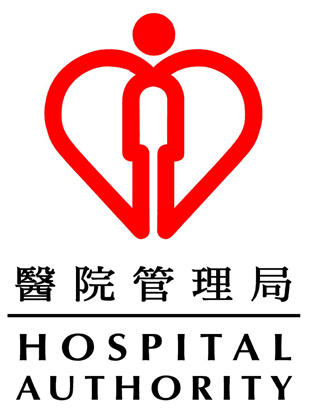 HA Central Committee on Infectious Diseases
HA Central Committee on Infectious Diseases Ref No.
CCIDER-COVID19-001(v1.4)
and Emergency Response (CCIDER)
Issue Date
21 September 2021
Review Date 13 February 2023
Interim Recommendation on Clinical Management of Approved by CCIDER
Adult Cases with Coronavirus Disease 2019 (COVID-
19)
Page
Page 10 of 18
6.4. Remdesivir
6.4.1. Remdesivir is an antiviral and inhibits SARS-CoV-2 RNA polymerase
which perturbs viral replication. Remdesivir is given intravenously, once
daily after an initial loading dose.
(i)
Eligibility criteria:
- Hospitalized with coronavirus disease 2019 (COVID-19)
AND
- Adults, and adolescents >=12 years of age and >= 40kg
AND
- eGFR based on Cockcroft-Gault equation >= 30ml/min
AND
- ALT below 5 times the upper limit normal at baseline
With
- pneumonia and SaO2 <94% on room air requiring
supplemental oxygen
AND
- Clinical deterioration with impending respiratory failure
AND
- NPS/TS SARS-CoV-2 or sputum CT value <30
OR
- Failed or contraindicated for interferon based treatment
regimen
(ii)
Dosage: 200mg IV loading dose following by 100mg IV daily as
maintenance. The total duration of treatment should be 5 days
(iii)
Remdesivir should be sensibly used in cases with better
recovery potential and quality of life after recovery, in view of
limited drug supply
(iv) Remdesivir may be considered in mild to moderate COVID-19
patients who are at high risk of deterioration, at discretion of ID
physicians
(v)
Pregnancy: Remdesivir should be avoided in pregnancy unless
clinicians believe the benefits of treatment outweigh the risks to
the individual
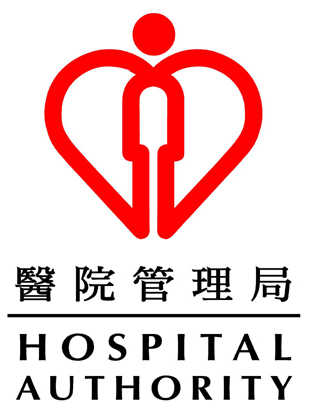 HA Central Committee on Infectious Diseases
HA Central Committee on Infectious Diseases Ref No.
CCIDER-COVID19-001(v1.4)
and Emergency Response (CCIDER)
Issue Date
21 September 2021
Review Date 13 February 2023
Interim Recommendation on Clinical Management of Approved by CCIDER
Adult Cases with Coronavirus Disease 2019 (COVID-
19)
Page
Page 11 of 18
(vi) Obtain consent for treatment. Major side effects: Phlebitis,
Nausea, vomiting, ALT elevations, hyperglycemia,
hyperbilirubinemia, hypersensitivity reactions, bradycardia
(vii) Coadministration of remdesivir and interferon beta-1b may be
considered in the discretion of ID physicians, particularly in
severe patients with early onset of disease
(viii) Stopping criteria:
Remdesivir should be discontinued in patients who develop any
of the following:
- ALT >= 5 times ULN during treatment with remdesivir
- ALT elevation accompanied by signs and symptoms of liver
inflammation or increasing conjugated bilirubin, alkaline
phosphates, or INR
- EGFR <30 ml/min
6.5. Corticosteroids
6.5.1. Consider dexamethasone 6mg daily PO/IV up to 10 days in patients
with pneumonia, and requiring oxygen supplement or invasive
mechanical ventilation, Prolonged duration or higher dose of
dexamethasone may be considered according to individual clinical
condition
6.5.2. Equivalent total daily doses of alternative glucocorticoids are
methylprednisolone 32mg and prednisolone 40mg
6.5.3. Dexamethasone may cause hyperglycemia, viral rebound of SARS-
CoV-2 and increased risk of bacterial, fungal and parasitic infections
6.5.4. Use of short-period, stress dose steroids (hydrocortisone 200mg max
daily) for refractory septic shock or other clinical indications on
physician discretion
6.6. Convalescent Plasma (CP)
6.6.1. Transfusion with convalescent plasma in COVID19 patients is
unlicensed. The use may be considered in patients with severe COVID-
19 infection, at the discretion of intensivist and ID Physician
6.6.2. Obtain consent for treatment. Potential side ef ects: transfusion allergic
reactions, transfusion-associated circulatory overload (TACO),
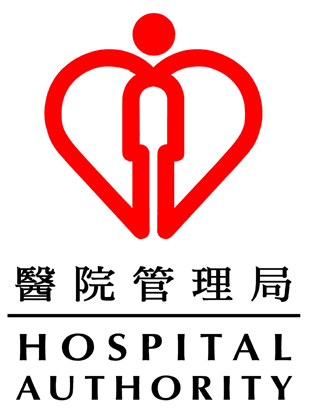 HA Central Committee on Infectious Diseases
HA Central Committee on Infectious Diseases Ref No.
CCIDER-COVID19-001(v1.4)
and Emergency Response (CCIDER)
Issue Date
21 September 2021
Review Date 13 February 2023
Interim Recommendation on Clinical Management of Approved by CCIDER
Adult Cases with Coronavirus Disease 2019 (COVID-
19)
Page
Page 12 of 18
transfusion-related acute lung injury (TRALI)
6.6.3. Limited by availability
6.6.4. It is recommended the use of CP to be arranged through clinical trial.
Meanwhile, liaise with QMH (HKU) and Hong Kong Red Cross for
arrangement if indicated
6.6.5. The safety and ef ectiveness during pregnancy have not been
evaluated
6.6.6. Potential side ef ects: transfusion-transmitted infections (e.g. Human
immunodeficiency virus (HIV), hepatitis B, hepatitis C), allergic
reactions, anaphylactic reactions, febrile nonhemolytic reactions,
transfusion-related acute lung injury (TRALI), transfusion-associated
circulatory overload (TACO), and hemolytic reactions. Hypothermia,
metabolic complications, and post-transfusion purpura
6.7. Tocilizumab
6.7.1. Monoclonal antibody to IL6 receptor
6.7.2. There are data from clinical trials suggesting use of tocilizumab in
combination with dexamethasone in certain hospitalized patients who
are exhibiting rapid respiratory decompensation due to COVID-19,
including:
-
Recently hospitalized patients (i.e. within first 3 days of admission)
who have been admitted to intensive care unit (ICU) within the
prior 24 hours and who require invasive mechanical ventilation,
noninvasive ventilation, or high-flow nasal cannula (HFNC)
oxygen (>0.4 FiO2/ 30L/min of oxygen flow) or
-
Recently hospitalized patients (i.e. within first 3 days of admission)
not admitted to the ICU who have rapidly increasing oxygen
needs and require noninvasive ventilation or HFNC oxygen and
who have significantly increased markers of inflammation (CRP
>=75mg/L)
6.7.3. Dose: 8mg/kg (Max: 800mg/dose), one dose
6.7.4. Use at the discretion of Infectious Disease (ID) Physician and
intensivist for severe patients with evidence of cytokines release
syndrome (Supported by elevated inflammatory markers like CRP, d-
dimer, ferritin, etc)
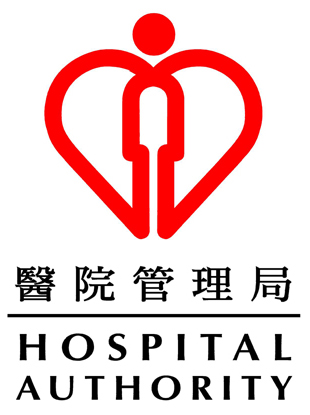 HA Central Committee on Infectious Diseases
HA Central Committee on Infectious Diseases Ref No.
CCIDER-COVID19-001(v1.4)
and Emergency Response (CCIDER)
Issue Date
21 September 2021
Review Date 13 February 2023
Interim Recommendation on Clinical Management of Approved by CCIDER
Adult Cases with Coronavirus Disease 2019 (COVID-
19)
Page
Page 13 of 18
6.7.5. Contact QMH and arrange serum IL-6 level test prior to giving
tocilizumab if possible
6.7.6. Major side ef ects: hypertension, increased ALT, injection site infections,
risk of opportunistic infections particularly bacterial, anaemia; serious
side ef ects: gastrointestinal perforation, neutropenia
6.7.7. Live vaccines should be avoided for at least 3 months, after
commencement of tocilizumab.
6.8. Baricitinib
6.8.1. An orally administered, selective inhibitor of Janus Kinase (JAK) 1 and
2. Baricitinib inhibits the intracellular signaling pathway of cytokines
known to be elevated in severe COVID-19.
6.8.2. Among hospitalized adults with severe COVID-19 having elevated
inflammatory markers but not on invasive mechanical ventilation,
concomitant use of baricitinib with remdesivir can be considered.
Baricitinib appears to demonstrate the most benefit in those with severe
COVID-19 on high flow oxygen or non invasive ventilation at baseline.
The benefits for persons on mechanical ventilation are uncertain.
6.8.3. Dosing: oral 4mg once daily for up to 14 days of treatment or until
hospital discharge, whichever is first. Longer duration can be
considered at the discretion of ID physician/ ICU intensivist.
6.8.4. Renal adjustment: oral 2mg daily (30 to <60 ml/min), 1mg daily (15 to
<30 ml/min)
6.8.5. Use in combination with remdesivir. Limited information on the use of
baricitinib in combination with systemic corticosteroids. Consider use at
ID physician’s discretion
6.8.6. Potential side ef ects: Infection (particularly upper respiratory tract
infection, herpes zoster), nausea, raised ALT, neutropenia, arterial
thrombosis, malignant lymphoma (<1%), malignant neoplasm (<1%)
6.8.7. Not recommended for patients on dialysis, having eGFR <15ml/min,
having acute kidney injury, or having known active tuberculosis
6.8.8. Pregnancy: Should be used during pregnancy only if potential benefit
justifies the potential risk for the mother and the fetus
6.8.9. Avoid use of live vaccines with baricitinib
6.8.10. Monitoring: CBP, LRFT (Consider interruption if ALC <0.2 or ANC <0.5)
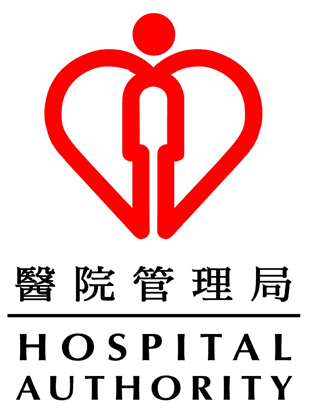 HA Central Committee on Infectious Diseases
HA Central Committee on Infectious Diseases Ref No.
CCIDER-COVID19-001(v1.4)
and Emergency Response (CCIDER)
Issue Date
21 September 2021
Review Date 13 February 2023
Interim Recommendation on Clinical Management of Approved by CCIDER
Adult Cases with Coronavirus Disease 2019 (COVID-
19)
Page
Page 14 of 18
6.9. Casirivimab plus imdevimab
6.9.1. Anti-SARS-CoV-2 monoclonal antibody products currently have
Emergency Use Authorizations (EUAs) from the Food and Drug
Administration (FDA) for the treatment of mild to moderate COVID-
19 patients who are at risk of progressing to severe disease and/or
hospitalization.
6.9.2. Casirivimab plus imdevimab: These are recombinant human
monoclonal antibodies that bind to nonoverlapping epitopes of the
spike protein RBD of SARS-CoV-2.
6.9.3. Dosing: Casirivimab 600mg plus imdevimab 600mg intravenous
infusions for one dose. If intravenous route is not feasible,
administration by four subcutaneous injections (2.5ml per injection)
can be used as an alternative.
6.9.4. The use of casirivimab plus imdevimab can be considered in patients
with mild to moderate severity and at risk of progression to severe
COVID-19 infection.
6.9.5. Medical conditions or other factors that were represented in clinical
trials that evaluated anti-SARS-CoV-2 monoclonal antibodies
• Age >=65
• Obesity (BMI >30)
• Diabetes
• Cardiovascular disease (including congenital heart disease) or
hypertension
• Chronic lung disease (e.g. COPD, moderate to severe asthma,
interstitial lung disease, cystic fibrosis, pulmonary hypertension)
6.9.6. Monoclonal antibodies should be used at discretion of ID physicians,
particularly for other conditions or factors at risk of progressing into
severe disease.
6.9.7. Side ef ects: Uncommon (up to 1 %): allergic reactions or reactions
following infusions: fever, chil s, headache, dif iculty breathing,
hypotension, facial swelling, itching, myalgia
6.9.8. Pregnancy: The safety for use in pregnancy is inadequate. Use if
potential benefits of treatment outweigh the potential risks to the
mother and fetus.
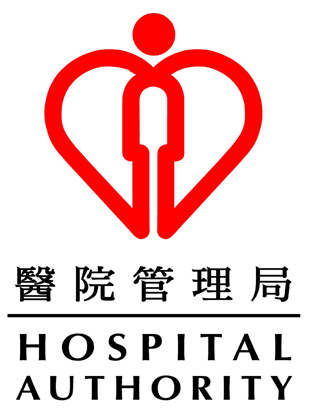 HA Central Committee on Infectious Diseases
HA Central Committee on Infectious Diseases Ref No.
CCIDER-COVID19-001(v1.4)
and Emergency Response (CCIDER)
Issue Date
21 September 2021
Review Date 13 February 2023
Interim Recommendation on Clinical Management of Approved by CCIDER
Adult Cases with Coronavirus Disease 2019 (COVID-
19)
Page
Page 15 of 18
6.10. Monitoring during treatment
6.10.1. Blood x CBP, LRFT, LDH, CRP
6.10.2. Repeat NPS +/- Throat swab or deep throat saliva x SARS-CoV-2 twice,
24 hours apart before isolation release
6.10.3. Blood x SARS-CoV-2 antibody for patients who are asymptomatic or 7
days after symptom onset or with SARS-CoV-2 RT-PCR CT value >=30
6.10.4. Repeat Stool x SARS-CoV-2 if there are previous positive results
before isolation release
6.10.5. Monitor for any concomitant bacterial or fungal infections
6.10.6. Observe for any side ef ects
7. Release from Isolation
7.1. Confirmed cases can be released from isolation if they fulfil the following criteria:
For symptomatic patients:
(i) Clinical conditions improve and afebrile; AND
(ii) Either one of the following criteria:
With two clinical specimens of the same type* (i.e. respiratory or stool)
tested negative for nucleic acid of severe acute respiratory syndrome
coronavirus 2 (SARS-CoV-2) by reverse transcription polymerase
chain reaction (RT-PCR) taken at least 24 hours apart; OR three
clinical specimens of the same type* taken at least 24 hours apart in
which RT- PCR test results showed consistent Ct value 33 or above;
AND 10 days have passed since the onset of il ness; OR
With a transition of the test results for SARS-CoV-2 IgG from negative
to positive results with at least one PCR Ct value 33 or above
For patients who did not develop any COVID-19 compatible symptoms all
along:
Either one of the following laboratory criteria:
(i) With two clinical specimens of the same type* (i.e. respiratory or stool)
tested negative for nucleic acid of SARS-CoV-2 by RT-PCR taken at least
24 hours apart; OR three clinical specimens of the same type* taken at
least 24 hours apart in which RT-PCR test results showed consistent Ct
value 33 or above; AND 10 days after the first positive RT-PCR for SARS-
 HA Central Committee on Infectious Diseases
HA Central Committee on Infectious Diseases Ref No.
CCIDER-COVID19-001(v1.4)
and Emergency Response (CCIDER)
Issue Date
21 September 2021
Review Date 13 February 2023
Interim Recommendation on Clinical Management of Approved by CCIDER
Adult Cases with Coronavirus Disease 2019 (COVID-
19)
Page
Page 16 of 18
CoV-2; OR
(ii) Serology test result for SARS-CoV-2 IgG change from negative to positive
with at least one PCR Ct value 33 or above
7.2. Discussion with MCO of CHP for lifting of isolation order is necessary
* For patient ever with stool specimen(s) tested positive, they should have two
negative stool specimens collected 24 hours apart before release from isolation
OR
three stool specimens taken at least 24 hours apart in which RT-PCR test results
showed consistent Ct value 33 or above.
8. Follow-up arrangement
8.1. Follow-up arrangement should be subject to parent team’s decision. In general,
patients who developed pneumonia or complications during hospitalization
should be monitored for any long term sequelae from COVID-19 infection
8.2. Subject to patient’s need, referral may be sent to clinical psychologist, medical
social worker, physiotherapist, occupational therapist, traditional Chinese
medicine practitioner or District Health Centre
8.3. Monitoring during follow-up
Blood tests (e.g. CBP, LRFT, CRP) +/- 2 clotted blood for SARS-CoV2
antibody if not taken previously
CXR
Consider lung function tests for moderate to severe cases
Consider HRCT for cases with residual lung changes
9. References
1. Laboratory testing for 2019 novel coronavirus (2019-nCoV) in suspected human
cases. Interim guidance 19 March 2020. WHO.
2. Q&A on coronaviruses. 2 February 2020. WHO
3. HA Communication Kit – Coronavirus disease 2019 (COVID-19) Version 6.5. 31
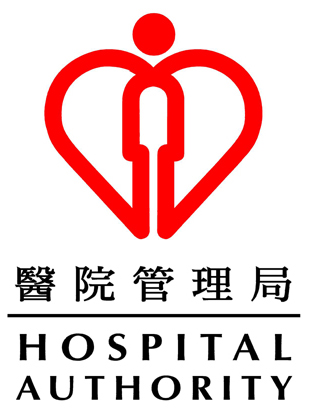 HA Central Committee on Infectious Diseases
HA Central Committee on Infectious Diseases Ref No.
CCIDER-COVID19-001(v1.4)
and Emergency Response (CCIDER)
Issue Date
21 September 2021
Review Date 13 February 2023
Interim Recommendation on Clinical Management of Approved by CCIDER
Adult Cases with Coronavirus Disease 2019 (COVID-
19)
Page
Page 17 of 18
Dec 2020
4. HA Interim Recommendation on Clinical Management of Cases of Middle East
Respiratory Syndrome Jan 2020
5. CHP Factsheet on Coronavirus Disease 2019 (COVID-19). 31 Dec 2020.
Available at:
https://www.chp.gov.hk/en/healthtopics/content/24/102466.html
6. Communicable Disease Surveil ance Case Definitions Version 17.0. 28 Apr
2020
7. JFW Chan, et al. A familial cluster of pneumonia associated with the 2019 novel
coronavirus indicating person-to-person transmission: a study of a family cluster,
Lancet 24 Jan 2020
8. Zhu, et al. A Novel Coronavirus from Patients with Pneumonia in China, 2019,
NEJM January 24, 2020
9. Role of lopinavir/ritonavir in the treatment of SARS: initial virological and clinical
findings. Thorax. 2004 Mar;59(3):252-6
10. Ribavirin and Interferon Therapy for Critically Il Patients with Middle East
Respiratory Syndrome: A Multicenter Observational Study. Clin Infect Dis. 2019
Jun 25.
11. Latest recommendations by Scientific Committee on Emerging and Zoonotic
Diseases and Scientific Committee on Infection Control after reviewing cases of
novel coronavirus infection. 6 May 2020
https://www.info.gov.hk/gia/general/202005/06/P2020050600679p.htm
12. KKW to, et al. Temporal profiles of viral load in posterior oropharyngeal saliva
samples and serum antibody responses during infection by SARS-CoV-2: an
observational cohort study. Lancet Infect Dis 2020 Mar 23
13. J Grein, et al. Compassionate use of Remdesivir for patients with severe COVID-
19. N Engl J Med 2020 Jun 11
14. Y Wang, et al. Remdesivir in adults with severe COVID-19: a randomised,
double-blind, placebo-controlled, multicentre trial. Lancet 2020 Apr 29
15. X Xu, et al. Ef ective treatment of severe COVID-19 patients with tocilizumab.
PNAS 2020 Apr 29
16. B Cao, et al. A Trial of Lopinavir-ritonavir in adults hospitalised with severe
COVID-19. N Engl J Med 2020; 382: 1787-1799
17. IFN Hung, et al. Triple combination of interferon beta-1b, lopinavir-ritonavir, and
ribavirin in the treatment of patients admitted to hospital with COVID-19: an
open-label, randomised, phase 2 trial. Lancet 2020 May 08
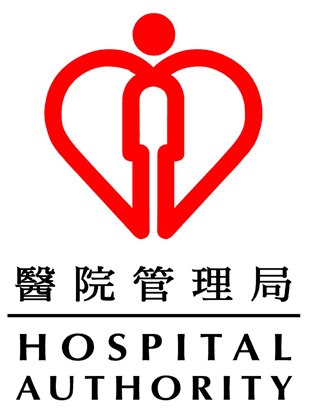 HA Central Committee on Infectious Diseases
HA Central Committee on Infectious Diseases Ref No.
CCIDER-COVID19-001(v1.4)
and Emergency Response (CCIDER)
Issue Date
21 September 2021
Review Date 13 February 2023
Interim Recommendation on Clinical Management of Approved by CCIDER
Adult Cases with Coronavirus Disease 2019 (COVID-
19)
Page
Page 18 of 18
18. Beigel JH, et al. Remdesivir for the Treatment of Covid-19- Final Report. N Engl
J Med 2020 Nov 5
19. The RECOVERY Collaborative Group. Dexamethasone in hospitalized patients
with COVID-19- Preliminary report. N Engl J Med 2020 July 17
20. Infectious Disease Society of America Guidelines on the treatment and
management of patients with COVID-19. Version 2021 June 25
21. Repurposed antiviral drugs for COVID-19. Interim WHO Solidarity trial results.
N Engl J Med 2020 Dec 2
22. Baricitinib plus Remdesivir for hospitalized adults with COVID-19. N Engl J Med
2020 Dec 11
23. COVID-19 Clinical Management Living guidance 25 Jan 2021
24. NIH COVID-19 Treatment Guidelines
https://www.covid19treatmentguidelines.nih.gov/
25. RECOVERY Collaborative Group, Horby PW, Pessoa-Amorim G, et al.
Tocilizumab in patients admitted to hospital with COVID-19 (RECOVERY):
preliminary results of a randomised, controlled, open-label, platform trial.
medRxiv.2021;preprint.
26. REMAP-CAP Investigators, Gordon AC, Mouncey PR, et al. Interleukin-6
receptor antagonists in critically il patients with COVID-19.
N Engl J Med. 2021.
27. Regeneron. Phase 3 trial shows REGEN-COV (casirivimab with imdevimab)
antibody cocktail reduced hospitalization or death by 70% in non-hospitalized
COVID-19 patients. 2021 Available at:
https://investor.regeneron.com/news-
releases/news-release-details/phase-3-trial-shows-regen-covtmcasirivimab-
imdevimab-antibody . Accessed April 5, 2021
28. Weinreich DM, Sivapalasingam S, Norton T, et al. REGEN-COV antibody
cocktail clinical outcomes study in COVID-19 outpatients.
medRxiv. 2021;
Preprint. Available at:
https://www.medrxiv.org/content/10.1101/2021.05.19.21257469v2
29. Centre for Health Protection. Updated Consensus Recommendations on Criteria
for Releasing Confirmed COVID-19 Patients from Isolation (As of 4 August
2021). Available at:
https://www.chp.gov.hk/files/pdf/updated_consensus_recommendations_on_cri
teria_for_releasing_confirmed_covid19_patients_from_isolation_4_august202
1r.pdf

















